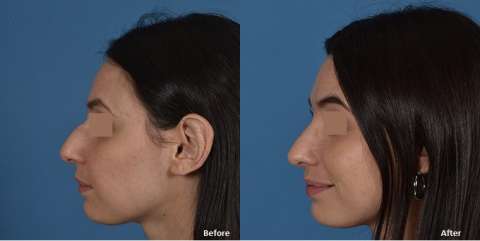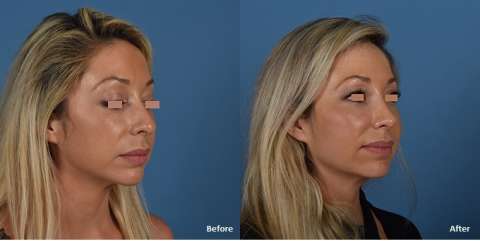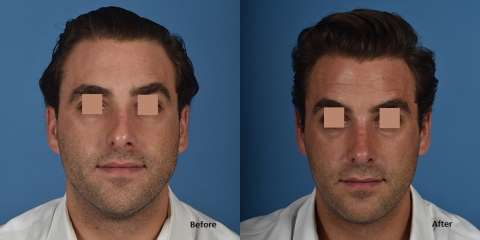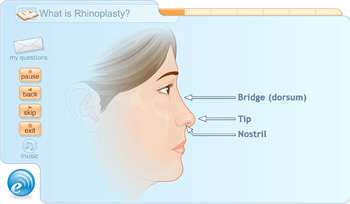Rhinoplasty
Find your care
Our team is made up of experts and leaders in the art and science of plastic surgery. To learn more about our services, call 310-825-5510.



A rhinoplasty is a surgical procedure that can make the nose smaller or to narrow it. But it can also make the nose larger or help you breathe better. A rhinoplasty can also be performed to change the way the bridge or tip of your nose looks. It can correct bumps or other problems. It can also change how your nostrils look.
A rhinoplasty can adjust the:
- reduce or increase the size of the nose
- narrow the span of the nostrils
- change the angle between the nose and upper lip
- change the tip or bridge of the nose
Rhinoplasty can be done as a closed or open procedure:
- closed procedure - the surgeon works from inside the nose by making a cut or incision inside the nose.
- open procedure - the surgeon works from the outside by making a small incision across the tissue that divides the nostrils.
Nasal surgery performed to improve an obstructed airway requires careful evaluation of the nasal structure. Surgery can correct a deviated nasal septum, a common cause of breathing impairment, by adjusting the nsasal structure to produce a better alignment.
You are a good candidate for a rhinoplasty if:
- your facial growth is complete
- you are physically healthy
- you don't smoke
- you have a positive outlook and realistic goals for what can be accomplished through surgery
Nasal surgery may be done with all incisions inside the nose or with a small incision crossing the narrow part of the columella. The surgeon sculpts the bone and cartilage framework of the nose to achieve the desired result. Excess bone, cartilage or skin may be removed or repositioned. In some cases, cartilage taken from the nasal septum (the wall of tissue dividing the two nasal air passages) or the ear and is used to add structure or support where needed. Other materials are sometimes used as well. Breathing difficulty may be improved by the surgery on the septum ("septoplasty") or by other techniques. After the surgery, a splint is often placed to protect the nose.
Most patients resume household activities within one or two days. Pain and discomfort following the surgery are typically controlled with oral pain medication. Most stitches/splints are removed within one week after surgery. Within one to two weeks most patients can return to work. Most bruising and/or swelling resolves within two weeks; more subtle swelling may persist longer, depending on the exact nature of the surgery and the patient.
Possible complications
Any surgery has risks. Possible complications of a rhinoplasty may include the following:
- The need for additional surgery. In rare cases, a second surgery may be needed to fix a minor defect that occurs because of the initial surgery.
- Surgery complications. As in any surgery, there is a risk of infection or reaction to the anesthesia. Nosebleeds can also occur after surgery.
- Burst blood vessels. Sometimes small blood vessels may burst, causing tiny red spots on the nose. The spots are often minor in appearance but can be permanent.
- Scarring. With the open procedure, scarring on the base of the nose is possible.

View Interactive Patient Education Nasal Reshaping (Rhinoplasty)